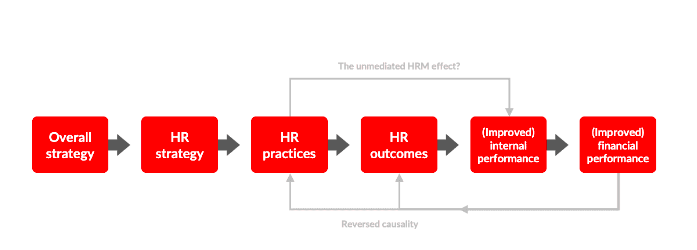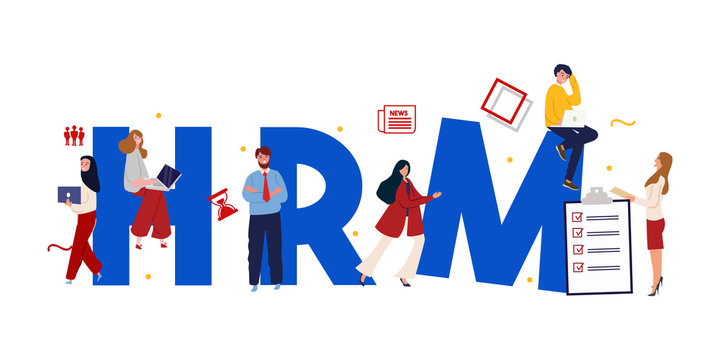What is the Standard Causal Model of HRM
The Standard Causal Model of HRM is outstanding amongst other known models of HRM. This model has been gotten from numerous comparative models that were distributed all through the 90’s and mid 2000’s. The model portrays a causal chain that has the beginning stage as business procedure and closures, through the HR forms, with an improved budgetary exhibition.
The model depicts and shows how HR activities that are aligned with organizational strategy can lead to better business performance. According to this model, HR will only be effective if its strategy is aligned with the business strategy in line with the best-fit theory. HR strategy is thus derived from the overall strategy of the organization so that there is maximum financial performance.

The HR practices follow the HR strategy. Examples include hiring, training, appraisal, and compensation. These HR practices lead to certain outcomes. Examples include commitment, quality output, and engagement.
These HRM outcomes lead in turn to improved internal performance. Examples include productivity, innovation, and quality. These outcomes lead to financial performance (e.g. profits, financial turnover, better margins, and ROI).
Two interesting relationships are the unmediated HRM effect, which shows that some HR practices can directly lead to improved internal performance. For example, good training can directly result in better performance, without necessarily influencing HR outcomes.
The reversed causality in the model shows that sometimes a stronger financial performance leads to more investments in HR practices and better HR outcomes. When performance is strong, employees are often more engaged (an HR outcome).
The model portrays an underlying chain which begins with the business plan and windups with fiscal performance. According to this approach, human resource is only useful if its method corresponds to the business strategy, which is the side with the best-fit hypothesis. Besides, human resource habits follow social resource plans. They include training, compensation, appraisal, hiring, and education. Such practices result in particular results like commitment, engagement, and quality output. The unmediated effect of a human resource indicates that some customs of HR may directly lead to enhanced internal performance. Also, the reversed causality in this approach demonstrates that at times, stronger monetary performance results to higher investments in human resource customs and increase HR results (DeCenzo et al., 2016). A strong performance leads to more engaged workers. Hence, the relationships in this approach are not often unidirectional. Generally, this HR model presents how a human resource plan is devised and the impacts of human resources on the internal procedure as well as the financial results of the organization.







